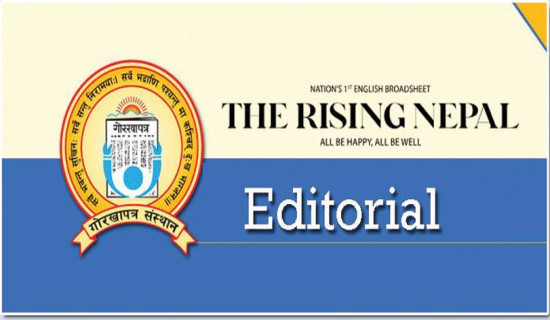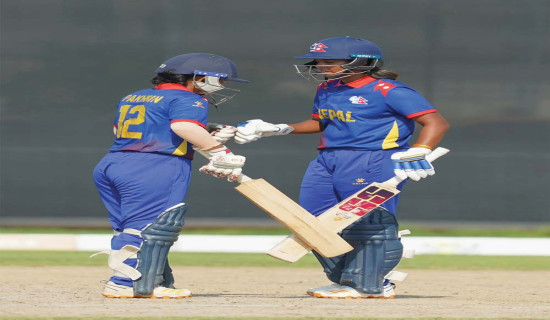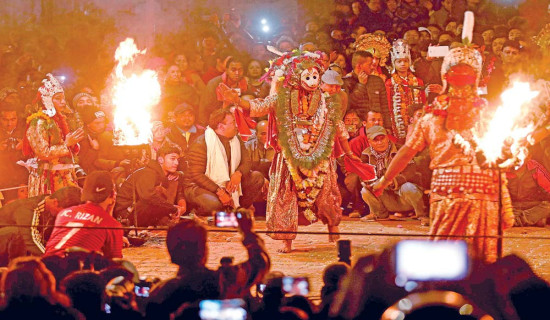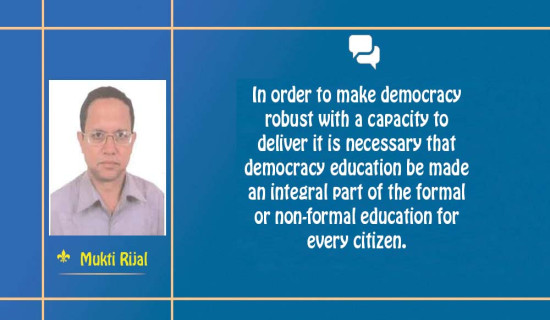- Thursday, 7 November 2024
Pace Up Reconstruction
One year has elapsed since a 6.4 magnitude earthquake hit Jajarkot, Rukum West and nearby districts. The devastating earthquake destroyed about 34,500 houses in Jajarkot and 16,900 in Rukum West. As per the Temporary Housing Construction Grant Procedure for Earthquake Affected Households - 2080, a displaced family whose house is completely or partially damaged and has become uninhabitable will receive Rs. 50,000 each in two installments. However, the inordinate delay in releasing the second installment of the relief assistance from the government, the victims have been left high and dry. This has also slowed down the pace of reconstruction works.
In addition to the destruction of private houses, the tremor knocked down scores of schools, hospitals and government offices, making them uninhabitable. According to statistics from the District Administration Office, 289 schools were destroyed, 598 were partially damaged, 92 government offices were fully functional and 60 were partially operational, while 22 health institutions had been destroyed, with 38 partially affected. More than 50 roads, including highways, had also suffered damage. This statistics show widespread impact of earthquake on infrastructures and essential services.
The local authorities have identified 48,517 beneficiaries. Among them, 40,463 individuals have received the first instalment of Rs. 25,000 each. Although 32,078 households registered on the disaster portal for the second instalment, only 6,182 have received the second instalment amount. With no reconstruction underway, they are forced to live in makeshift shelters made of zinc sheets. The quake victims are forced to endure harsh winter, scorching summer and heavy rain. Many victims opted to live in a house rendered unfit for living as they could not protect them during cold and rainy season.
The earthquake has affected education and health sectors badly. After the earthquake destroyed the schools and health posts, children have been studying in temporary arrangements, which lack necessary resources for effective teaching-learning activity. Likewise, health posts too are operating from temporary structures, which can hardly provide cater quality health services to the victims. Lack of people's access to health and education is quite worrisome that calls speedy reconstruction drive.
National Disaster Risk Reduction Management Authority needs to play more effective role in resettlement of Jajarkot earthquake victims through damage assessment, resource mobilisation, coordination with national and international partners so that planning and implementation of resettlement programmes can gather steam. However, the construction of permanent structures for earthquake victims is yet to commence. Although arrangements for detailed studies for reconstruction and permanent structure construction have been made, they have not yet been implemented. The Ministry of Urban Development (MoUD) should work for the reconstruction of government buildings as soon as possible.
One year time is adequate to push for the timely reconstruction of damaged houses and public infrastructures. But Jajarkot earthquake victims have suffered a lot in these twelve months. They are still languishing in makeshift structures and have undergone a lot of hardships. Their suffering underscores the urgent need for effective resettlement plans and adequate housing. The government must prioritise rehabilitation to restore hope and stability among the Jajarkot earthquake victims. There should be proper coordination among three tiers of government for the timely and effective rehabilitation of these earthquake victims.
















